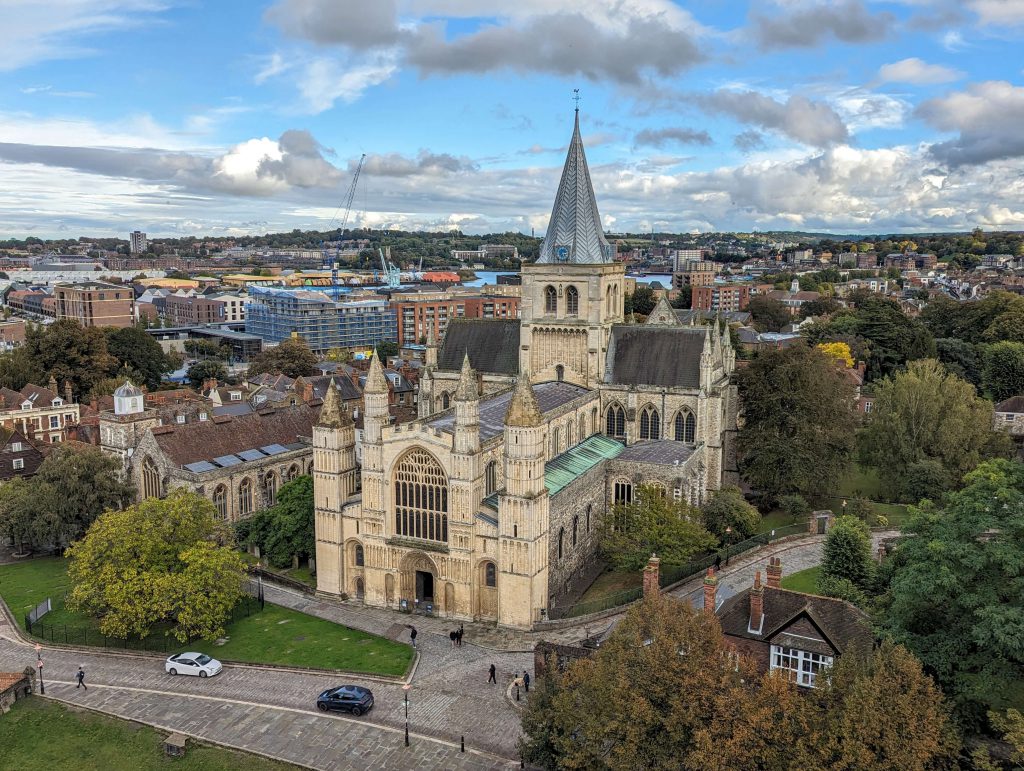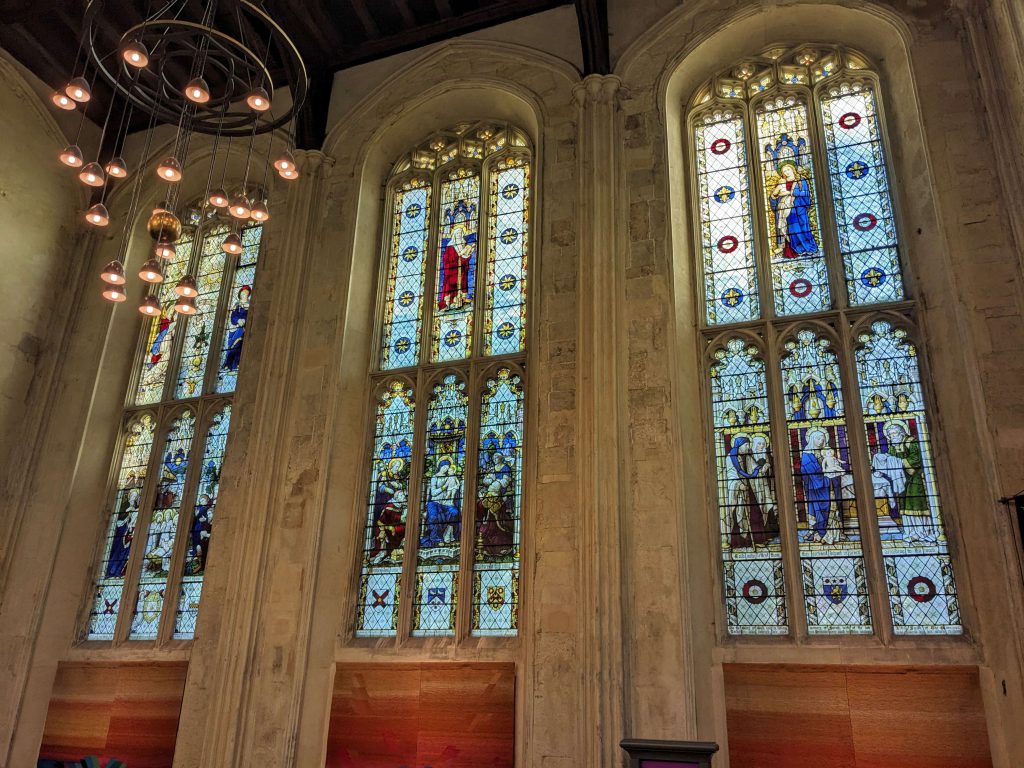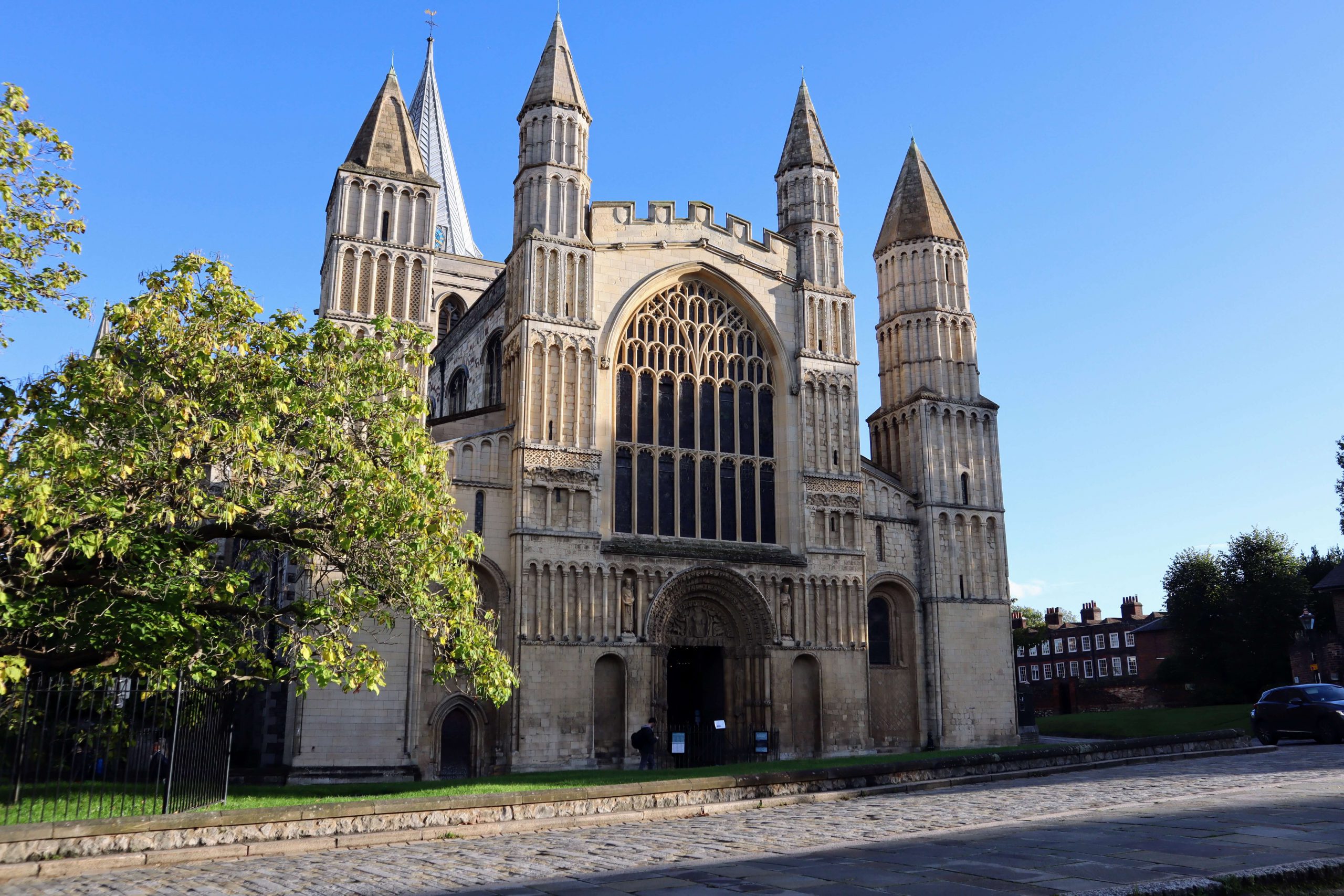Rochester Cathedral was founded in 640 making it England’s second oldest cathedral, losing out on top spot to Canterbury Cathedral. It was founded by Justus, one of the missionaries who accompanied Augustine of Canterbury to convert the pagan southern English to Christianity
Click here to watch our tour of Rochester Cathedral
Following the Norman Conquest of 1066, William the Conqueror bestowed Rochester Cathedral and Castle upon his half-brother, Odo of Bayeux. Unfortunately, under Bishop Odo’s stewardship, the resources were mismanaged, leading the once-prosperous cathedral to near-destitution.
In 1072, Archbishop Lanfranc of Canterbury, among others, held Odo accountable, leading to Gundulf being appointed as the first Norman Bishop of Rochester in 1077.
In 1080 bishop Gundulf set about rebuilding Rochester Cathedral across the road from Rochester Castle. This close proximity serves as a compelling symbol of the dual centres of authority in medieval society. It represents both the secular power of the Crown and nobility, as well as the ecclesiastical power held by bishops and monastic orders.


Following Gundulf’s death, Rochester Cathedral experienced a somewhat tumultuous history. In 1130, despite being consecrated by the Archbishop of Canterbury in the presence of Henry I, the occasion was marred by a terrible fire that nearly laid waste to the entire city and inflicted damage upon the newly constructed cathedral. Subsequent to this event, the cathedral suffered further setbacks, enduring damage from fires in 1137 and 1179. In the course of historical conflicts, it faced looting in 1215 by the forces of King John and once more in 1264 during sieges led by Simon de Montfort, illustrating the cathedral’s resilience amid the challenges of warfare and unrest.
In the 13th century, Rochester Cathedral gained prominence as a significant pilgrimage site after the death of William of Perth, a Scottish baker who was tragically murdered nearby. His remains were transported to the Cathedral, where a shrine, which no longer exists, became a focal point for reported miracles. Today, only the Pilgrim steps remain, marking the path that medieval pilgrims took to the sacred shrine.


Legend has it that on January 1, 1540, Henry VIII made a visit to Rochester, where he met Ann of Cleves for the first time and reportedly left “greatly disappointed.” Whether linked or not, later that same year, the old Priory of St. Andrew at Rochester Cathedral was dissolved by royal command. This event marked one of the final chapters in the dissolution of the monasteries during Henry VIII’s reign.
The cathedral underwent a significant decline, falling into a state of disrepair and disrepute. Samuel Pepys, the 17th-century diarist, later dismissed it as a “shabby place,” reflecting the diminished condition and reputation that had befallen Rochester Cathedral during that period.
In the 19th century, Rochester Cathedral underwent several restoration efforts to revive its glory. The primary renovations took place between 1824 and 1830 under the direction of Lewis Nockalls Cottingham, followed by further restoration work conducted by Sir George Gilbert Scott in 1872. Their efforts aimed to both renovate and restore the cathedral, bringing it back to a reasonable facsimile of its original 11th-century condition.

